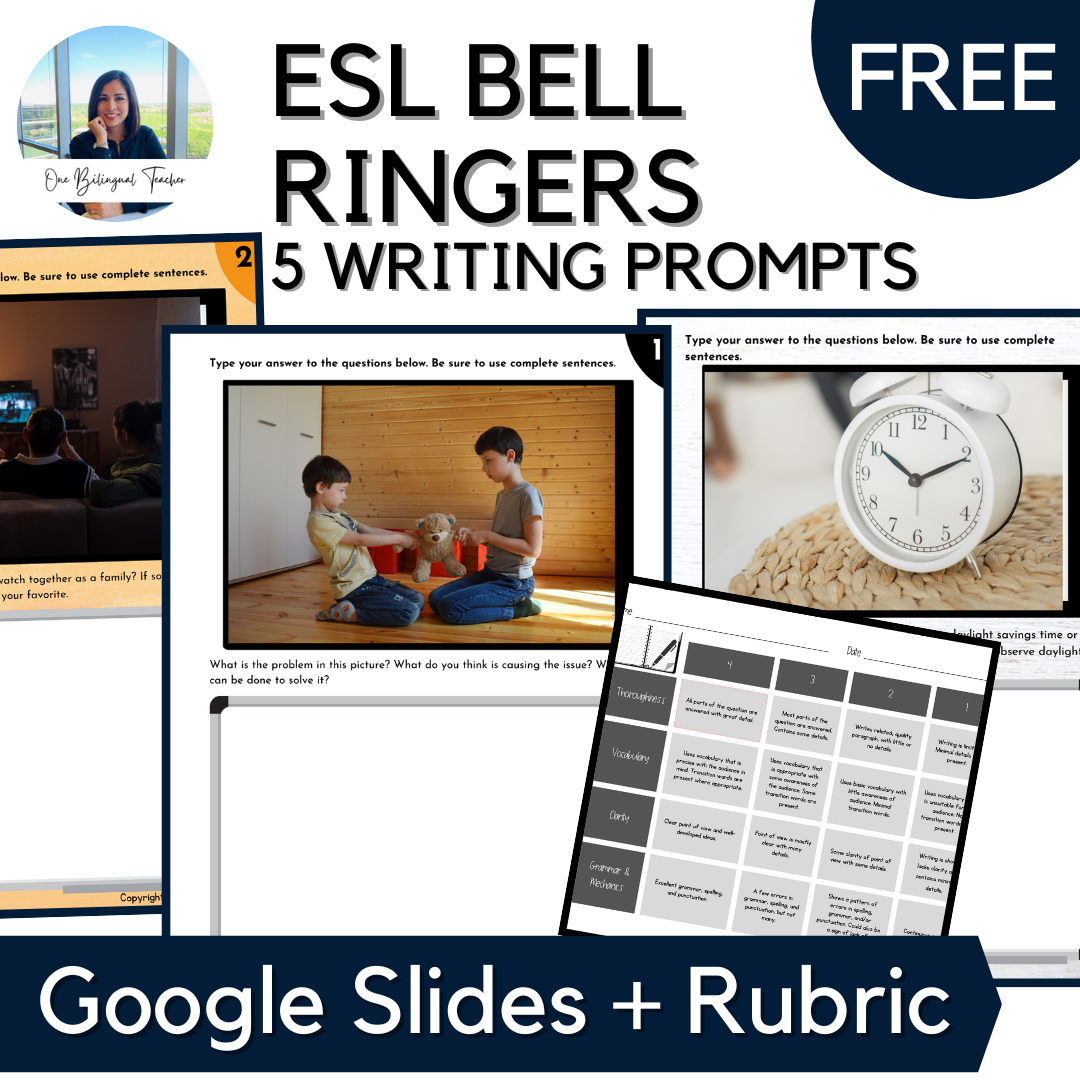10 Effective Strategies for Differentiating Instruction for ESL Students
If you have ESL (English as a Second Language) students in your classroom, you already know how important it is to tailor your teaching methods to meet their unique needs. It's all about making sure every student has the opportunity to succeed and thrive in your English class. In this blog post, we'll discover ten effective strategies for differentiating instruction for ESL middle school students.
1. Pre-Teach Vocabulary: Building a Strong Foundation
One of the first steps to effective differentiation is pre-teaching vocabulary. ESL students often struggle with unfamiliar words, so giving them a head start can make a world of difference. Provide a list of essential vocabulary words related to the upcoming lesson. Talk about them, define them, and illustrate them. You can even offer visual aids like flashcards with simple definitions to enhance their understanding. Remember, a strong vocabulary is the key to comprehending the content.
2. Use Visual Aids: A Picture's Worth a Thousand Words
Visual aids are your secret weapon to differentiation when teaching ESL students. Incorporate images, diagrams, and videos to support their comprehension of the content. Visuals can make complex information more accessible and help illustrate concepts more clearly. Whether you're showing pictures, illustrations, or short video clips, it's all about making the material meaningful.
3. Scaffolded Assignments: Building Skills Gradually
Another key differentiation strategy is using scaffolded assignments. Start with simpler tasks and progress to more challenging ones. This gradual increase in complexity helps ESL students build their skills over time. It's like building a house – you start with a strong foundation and work your way up. Don't rush them into complex assignments; let them grow at their own pace.
4. Provide Sentence Starters: Crafting Well-Organized Paragraphs
When it comes to writing, ESL students often find it hard to start their responses. To make it easier, provide sentence starters. These can help them begin their written responses and construct well-organized paragraphs. You're not writing it for them, you’re scaffolding. For example, a sentence starter for a paragraph about a favorite book could be, "One of my all-time favorite books is..." You’ll be surprised at the writing they can come up with using sentence starters.
5. Use Graphic Organizers: Organizing Thoughts Clearly
Graphic organizers are a great tool for differentiating for ESL students to help them organize their thoughts. Whether it's a mind map, a Venn diagram, or a flowchart, these visual tools make complex information more digestible. They provide a clear structure and help students see the connections between ideas. It's like providing them with a roadmap for their writing.
6. Flexible Grouping: Learning from Peers
Don't be afraid to mix things up when it comes to group work. Grouping ESL students with peers who can provide support and serve as language models is a great differentiation strategy. Peer collaboration helps their language development and understanding. It's like having a conversation partner who can help them navigate the difficulty of English. Remember, language is social, and learning from each other is a powerful tool.
7. Tailored Reading Materials: Matching Proficiency Levels
Select reading materials that match your ESL students' language proficiency levels. This might involve offering a variety of texts, including simplified versions of complex content. The goal is to make sure they're challenged but not overwhelmed. If you have the privilege of having consistent levels don’t be afraid to read a lower-level book to teach grade-level concepts.
8. Differentiated Homework: Meeting Individual Needs
Just as you differentiate instruction in the classroom, consider differentiated homework. Assign tasks that align with your ESL students' language abilities. Offer options for different homework tasks or provide additional support as needed. Homework is an opportunity for independent practice, so it should be manageable and purposeful. You can use these activities as homework, as they’re available on different levels. You can also assign work that can be done by all levels, such as these writing prompts. That way, you’re not scrambling to find 5 different activities for 5 different levels in your class.
9. Clarify Instructions: Clear and Simple Guidance
When giving instructions for assignments and tasks, provide explicit and simple guidance. This is a simple, yet powerful way to differentiate instruction. Check for understanding and address any questions or confusion. It's like handing them a map with clear directions to navigate their way through the task. Keep directions short and sweet. Repeat them, and ask them to repeat. Avoid being vague, and encourage questions – after all, there's no such thing as a silly question. Ask a student or two to repeat the directions. Ask students to tell restate the directions in partners. Repeat, repeat, and repeat again.
10. Encourage Language Practice: Real-Life Application
Create opportunities for your ESL students to practice English in real-life scenarios. Engage them in discussions, debates, presentations, and writing activities. This practical application of language skills is invaluable. It's like taking what they learn in the classroom and applying it to real-world situations. Language is a living thing, and it needs to be used to grow and it’s beneficial to all students, not just English learners.
In a Nutshell
Practicing these strategies in your classroom will make a huge difference for your ESL students. Remember, every student's language journey is different, and these strategies allow you to provide individualized support and help them be successful in your classroom.
Try these free writing picture prompts to help your students develop their language.



